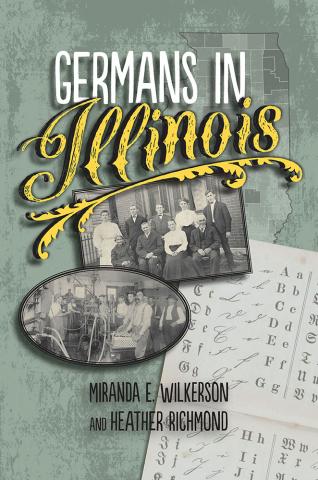By SIU Press
“This engaging history of one of the largest ethnic groups in Illinois explores the influence and experiences of German immigrants and their descendants from their arrival in the middle of the nineteenth century to their heritage identity today.
“Co-authors Miranda E. Wilkerson and Heather Richmond examine the primary reasons that Germans came to Illinois and describe how they adapted to life and distinguished themselves through a variety of occupations and community roles.”

“The promise of cheap land and fertile soil in rural areas and emerging industries in cities attracted three major waves of German-speaking immigrants to Illinois in search of freedom and economic opportunities.
“Before long the state was dotted with German churches, schools, cultural institutions, and place names.
“German churches served not only as meeting places but also as a means of keeping language and culture alive.
“Names of Illinois cities and towns of German origin include New Baden, Darmstadt, Bismarck, and Hamburg.
“In Chicago, many streets, parks, and buildings bear German names, including Altgeld Street, Germania Place, Humboldt Park, and Goethe Elementary School.”
–
“Today, German heritage in Illinois is celebrated in festivals and carnivals statewide, while some communities in Chicagoland – as well as Moline, Peoria, Gibson City, Mascoutah, Waterloo and Millstadt – feature popular German restaurants. Museums and research centers on German-American history and heritage are found in several large metro areas, including Chicago, and the Quad Cities,” the downstate Jacksonville Journal-Courier notes.
–
“Historically the bulk of Chicago’s Germans lived in the North Side with the center of the German population being Lakeview. In German the North Side was called the ‘Nord Seite,'” Wikipedia notes.
–
* Immigrant’s Voyage, Germany To Illinois, 1851.
–
Comments welcome.
Posted on June 17, 2019


